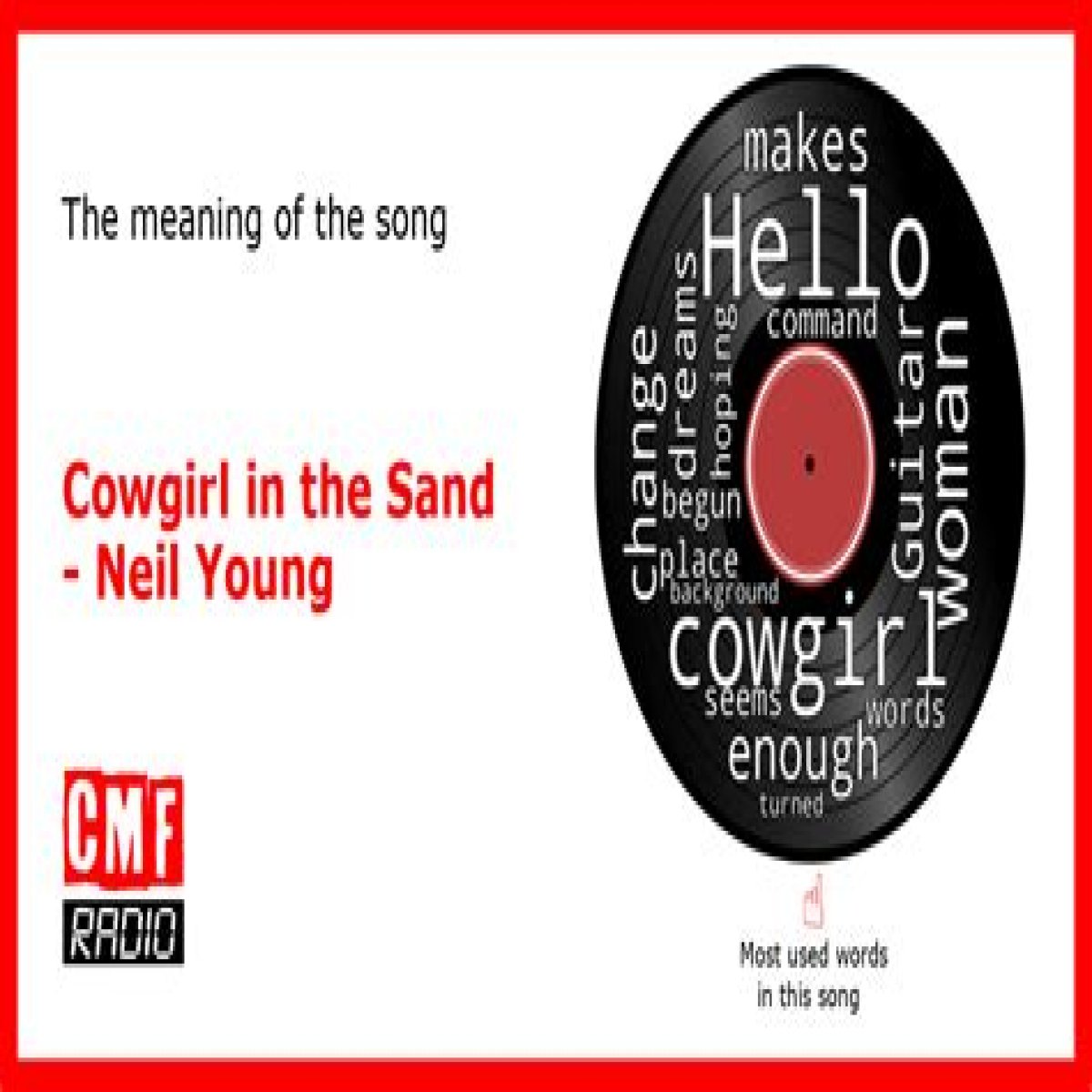Neil Young’s iconic track “Cowgirl in the Sand” is a timeless classic that continues to captivate audiences with its enigmatic lyrics and melodic guitar riffs. Released in 1969 as part of his second solo album, “Everybody Knows This Is Nowhere,” the song delves into themes of love, introspection, and freedom. With its haunting melodies and poetic verses, “Cowgirl in the Sand” has sparked countless interpretations and debates among music enthusiasts. In this article, we unravel the meaning behind this beloved ballad and shed light on its enduring appeal.
The lyrics of “Cowgirl in the Sand” are open to individual interpretation, allowing listeners to connect with the song personally. The track revolves around the concept of love, particularly the pain and vulnerability associated with it. Neil Young’s introspective and introspective nature shines through as he contemplates the complexities of relationships.
- Frequently Asked Questions About “Cowgirl in the Sand”
- 1. What inspired Neil Young to write “Cowgirl in the Sand”?
- 2. Is there a deeper meaning to the title “Cowgirl in the Sand”?
- 3. What is the significance of the repeated line “Hello cowgirl in the sand”?
- 4. How does Neil Young’s unique guitar style contribute to the song’s meaning?
- 5. Is “Cowgirl in the Sand” autobiographical?
- 6. How has the meaning of the song evolved over time?
- 7. What is the significance of the juxtaposition between the light and heavy instrumentation in the song?
- 8. How does “Cowgirl in the Sand” compare to Neil Young’s other songs?
- 9. Has Neil Young ever discussed the meaning of “Cowgirl in the Sand”?
- 10. What impact has “Cowgirl in the Sand” had on music history?
- 11. Are there any cover versions of “Cowgirl in the Sand”?
- 12. How does “Cowgirl in the Sand” connect to Neil Young’s overall body of work?
Frequently Asked Questions About “Cowgirl in the Sand”
1. What inspired Neil Young to write “Cowgirl in the Sand”?
Neil Young drew inspiration for “Cowgirl in the Sand” from his own experiences with love and heartbreak. The song emerges from a raw emotional space, capturing the universal struggles and desires that arise within relationships.
2. Is there a deeper meaning to the title “Cowgirl in the Sand”?
The title can be seen as a metaphor for longing and unattainable love. It suggests the image of someone free-spirited yet isolated, wandering aimlessly on a vast beach. This imagery aligns with the song’s themes of longing, unrequited love, and the search for meaning.
3. What is the significance of the repeated line “Hello cowgirl in the sand”?
The repetition of this line adds to the hypnotic quality of the song. It serves as a refrain, emphasizing the yearning for connection and the desire to make sense of complicated emotions.
4. How does Neil Young’s unique guitar style contribute to the song’s meaning?
Neil Young’s distinctive guitar riffs in “Cowgirl in the Sand” intertwine with the lyrics, creating a symbiotic relationship between the music and the message. The melodic guitar solos convey emotions without the need for words, allowing listeners to immerse themselves in the song’s essence.
5. Is “Cowgirl in the Sand” autobiographical?
While Neil Young often draws from personal experiences in his songwriting, “Cowgirl in the Sand” remains open to interpretation. While aspects of the song may reflect his own emotions, it also serves as a vessel for listeners to project their own experiences and emotions onto.
6. How has the meaning of the song evolved over time?
Like many timeless classics, “Cowgirl in the Sand” has evolved and resonated with different generations over the years. Its themes of love, longing, and introspection have allowed it to transcend time and remain relevant to listeners of all ages.
7. What is the significance of the juxtaposition between the light and heavy instrumentation in the song?
The juxtaposition of the lighter, melodic verses with the heavier, distorted guitar riffs adds depth and contrast to the song. It reflects the emotional rollercoaster experienced within relationships, highlighting the highs and lows of love.
8. How does “Cowgirl in the Sand” compare to Neil Young’s other songs?
Each of Neil Young’s songs carries its own unique charm and meaning. “Cowgirl in the Sand” stands out with its introspective lyrics, captivating guitar solos, and haunting melodies. It showcases Neil Young’s ability to convey complex emotions through his distinctive songwriting style.
9. Has Neil Young ever discussed the meaning of “Cowgirl in the Sand”?
Neil Young has remained relatively cryptic about the specific meaning behind “Cowgirl in the Sand.” Like many artists, he prefers to let his music speak for itself, leaving room for individual interpretation and personal connections.
10. What impact has “Cowgirl in the Sand” had on music history?
“Cowgirl in the Sand” is considered a significant contribution to the rock and folk genres, shaping the musical landscape of the late 1960s and beyond. Its introspective lyrics, mesmerizing melodies, and distinctive guitar solos have influenced countless artists and continue to resonate with music lovers worldwide.
11. Are there any cover versions of “Cowgirl in the Sand”?
Numerous artists have covered “Cowgirl in the Sand” over the years, each offering their own unique interpretation of the song. Notable covers include those by City and Colour, The Byrds, and Cat Power.
12. How does “Cowgirl in the Sand” connect to Neil Young’s overall body of work?
“Cowgirl in the Sand” showcases Neil Young’s introspective songwriting style and his ability to convey complex emotions with simplicity. It aligns with his broader body of work, which often explores themes of love, longing, and the human experience. The song remains an integral part of Neil Young’s musical legacy.
